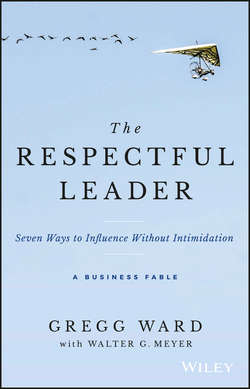Читать книгу The Respectful Leader - Meyer Walter G. - Страница 5
На сайте Литреса книга снята с продажи.
Introduction
ОглавлениеAs my colleagues and I travel around the world giving speeches and leading seminars, we keep hearing the same lament from employees, managers, even leadership. Just about everyone feels that there’s more and more disrespect going on in our workplaces than ever before. We’re hearing that common courtesy isn’t common practice; that employees feel bullied, ignored, and undervalued; and that senior management considers them disposable when times get tough or priorities change. Numerous employee surveys and organizational culture studies support these perceptions. Maybe you’re experiencing this, too?
So why is this? Why are people feeling so disrespected?
Well, it could be that rapid globalization is mushing together diverse groups of people faster and more intensely, and that what is considered acceptable and tolerable behavior in one culture may be considered disrespectful and intolerable in another.
It could also be that the ever-increasing frenzy and complexity of business, the shift to the freelance and “gig” economy, and continuous economic uncertainty cause people to shove courtesy aside because they’re afraid of losing time, opportunities, and resources. There’s no question that operating from a mindset of scarcity can quickly drive a normally respectful person to be extraordinarily rude.
Ambition, competitiveness, and managers with so-called “Type A” personalities – who are determined to win at any cost – can also contribute to sustaining disrespectful work cultures where decency and caring are considered synonymous with weakness and ineffectuality. Additionally, “competitive busy-ness,” the tendency to take on overwhelming amounts of work in order to increase a sense of self-importance and the boss’s perception of one’s value, can also be a handy excuse for rudeness.
Still another factor contributing to all of this disrespect may be our ever-expanding love affair with technology – smart phones, tablets, laptops, and apps for every possible need or want – leading us to skip traditional human interaction in favor of a text, chat, or email. How many times have we received emotionally loaded emails from someone down the hall, or on another floor, about an issue that could easily have been resolved with a quick phone call or face-to-face? How many meetings have we been in with people who are supposed to be paying attention and contributing, but they’re constantly being distracted by their smart phones? Everyone agrees that these are disrespectful behaviors, and yet most of us say nothing, especially if our bosses are the culprits.
That brings us to this book. After more than two decades of studying and learning about respect and disrespect while consulting and leading training programs for some of the world’s most prestigious companies, non-profits, and government agencies, my colleagues and I – not to mention many top consultants and organization development experts – have become convinced that creating and maintaining a work culture of respect and Respectful Leadership are absolute business imperatives.
Respectful Leadership means treating everyone – regardless of rank, status, or position – with the same genuine regard and consideration that you would like them to give you. It means being the first to offer respect to others, even strangers, and behaving in a respect-worthy way. It means getting your “emotional shift” (more on this later) together when things go wrong. It means acknowledging and honoring others; consistently looking for qualities in others to respect; nipping disrespect in the bud, respectfully; and fully apologizing for disrespectful behavior.
Although Respectful Leadership as an idea may seem like a warm and fuzzy, the measureable results are hard to dismiss: they include increased loyalty, respect, trust, collaboration, and productivity; fewer complaints, conflicts, and lawsuits; and an energizing sense throughout the entire organization that each one of us can be wholly successful in whatever we’re doing while still behaving, and being treated, like decent human beings. Bottom line: the human and business case for Respectful Leadership is undeniable and irrefutable.
But for many years we struggled with a basic question: How do we make that business case for Respectful Leadership in a way that everyone can understand and want to buy into?
The answer is to tell a short, easy-to-read story about people and situations that are familiar to most, if not all of us. It’s very likely you’ll know and work with people who are similar to the people in our fable. And it’s likely that their behaviors, and the challenges they’re facing, are also very familiar to you. It’s that familiarity – that sense of “Yup, that’s kind of how we are” feeling – that will allow you to make the human and business case for Respectful Leadership for yourself.
It’s our sincere hope that you will find this story, and the concepts, tools, and techniques we outline within it, to be truly useful in helping you and your organization understand how powerful, effective, and rewarding Respectful Leadership can be.
